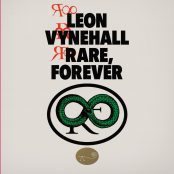[dropcap style=”font-size:100px; color:#992211;”]V[/dropcap]ery often in techno a little optimism goes a long way.
Or rather, the results when producers have tried to self-consciously introduce utopian or idyllic moments have been embarrassing, sometimes verging on new-age dolphin music with beats (yes you, 90s techno artists, you know who you are).
[quote]new-age dolphin music with beats[/quote]
On the other hand, keeping the toxic new-age cliches at bay entails a danger of entirely immersing yourself in self-conscious gloom.

What Sigha offers here is optimism of the spirit but with virtually no trace of the pessimism-inducing cliches this has so often implied. Living with Ghosts communicates an optimism of and about the form, without the banality of content that has often entailed. The music has no shortage of harsh and cold detail, yet manages to communicate a justified optimism about techno itself and its potentials.
This refreshing quality may well derive from the fact that Sigha (James Shaw) has come to techno late via some very different forms. He is a former guitarist and some of his strongest influences come from shoegaze indie. This ghostly influence can be heard on the more ambient tracks but there are no clumsy quotations or jarring intrusions on the techno templates here.
We are told that Shaw now feels most at home with techno (perhaps not coincidentally the album was produced at his new base in Berlin). It seems likely that being a producer who came to techno late and via other musics gives him an extra drive to introduce some original elements, and to work harder to prove his worth as an incomer.
[quote]Sigha promises drama and he delivers[/quote]
The atmospheric drones and crunching machineries of brief opening track ‘Mirror’ set a high standard that’s maintained and even exceeded throughout the album. Sigha promises drama and he delivers. ‘Ascension’ instantly reassures that its title doesn’t imply any new age nonsense. It cycles around energising, surgically tribal percussion patterns accompanied by plenty of shifting high-end detail to maintain interest and momentum. Here there are interesting traces of the more beat-driven tracks by Demdike Stare or even of ethno-industrialists Muslimgauze.
‘Puritan’ is suitably strict and austere; set around tough, punitive beats that gradually cede to encroaching static and an atmospheric outro. Next we’re confronted by ‘Scene Couple’; a very energising track that forces the listener to respond through its ascending and descending waves of hiss contrasting with the dynamically oscillating acidic sequence at its heart.
‘Translate’ simultaneously slows the pace and intensifies the atmosphere. This is one of the most “industrial”-sounding tracks, based around a rigid percussive groove and cold, machinic details. It could be a great track with which to build (or re-build) a set prior to unleashing harder, faster tracks.
quote] the sonic palette is, if not exactly colourful, wider and less “grey”[/quote]
The icing on the cake is a very subtle and precise extended fade-out full of static and factory-like sounds. This is followed by ‘Suspension’ – a beatless, yet vaguely anthemic interlude, before the pace resumes with ‘Dressing for Pleasure (Ideal).’ The title immediately suggests the aesthetics of the Downwards label and Regis (even the press release makes the comparison) but here the sonic palette is, if not exactly colourful, wider and less “grey”. The bass is tough but polished but and the intensifying waves of icy hiss are create a really tangible and dramatic effect.
The even-more Downwards-sounding ‘Faith and Labour’ is different again. The Jeff Mills-like sonar pulses and nagging stabs have a trace of X103‘s epochal 1993 album Atlantis (Tresor). ‘Delicate’ is a misnomer if ever there was one. It’s a dark field of harsh static and what sounds like a distant alarm sound carried on the wind yet it still has a sense of dynamism.
‘Dressing for Pleasure (Extract)’ is a relatively slow minimal percussive work-out which is again swathed in Sigha’s distinctive waves of static and hiss. In contrast, the final beat-driven track ‘She Kills in Ecstasy’ is a bustling, energised track which is much more serene than its title suggests, especially in its final ambient section. This is the point on the album where the shoegaze aesthetics are most apparent, although the artist that seems most relevant here is the old Warp act Seefeel.
The ten minute plus ‘Aokigahara’ acts as an extended ambient outro. It’s very well done, if a little more routine and less compelling than the rest of Living with Ghosts – a little more tension and discord to contrast the dreamy, oceanic elements might have been no bad thing. What’s interesting is that if you heard this track in isolation with no pre-knowledge of Sigha you’d probably be quite surprised by his harder, darker tracks.
The album is the sound of an artist optimistically and constructively pushing forward, and in its insistence on innovation, his work acts as a very welcome anti-nostalgic corrective to more pedestrian and unimaginative forms of the genre.
[button link=”http://www.hotflushrecordings.com/” newwindow=”yes”] Hotflush Recordings[/button]























